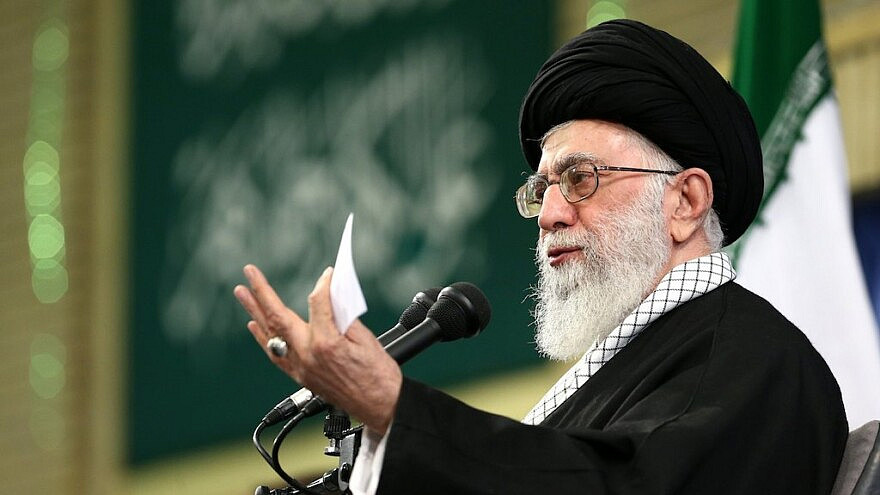 Syryjczycy świętujący śmierć Nasrallaha 28 września 2024 r.,
Syryjczycy świętujący śmierć Nasrallaha 28 września 2024 r.,
 „Abu Jair!” – Dla Syryjczyków takich jak ja, Netanjahu jest nieprawdopodobnym bohaterem
„Abu Jair!” – Dla Syryjczyków takich jak ja, Netanjahu jest nieprawdopodobnym bohaterem
Anonim
Zostaliśmy nazwani zdrajcami i syjonistycznymi agentami, którzy zasłużyli na gaz sarin Assada, ale po śmierci Nasrallaha rozdawaliśmy słodycze.
Siódmego października ubiegłego roku, przeglądając moje konto na Instagramie, zobaczyłem zalew obrazów odrażającej masakry. Początkowo sądziłem, że takich okrucieństw mógł się dopuścić tylko reżim Assada i Hezbollah przeciwko kolejnemu syryjskiemu miastu. Dreszcz przebiegł mi po plecach, gdy uświadomiłem sobie, że wydarzyło się to w Izraelu i zostało dokonane przez terrorystów Hamasu. W miarę pojawiania się kolejnych filmów i relacji ocalałych zacząłem odczuwać mieszankę obrzydzenia, bezradności i strachu. Wróciły do mnie wspomnienia najkrwawszych okrucieństw w Syrii. „Mam nadzieję, że nie dokonają kolejnych masakr” – pomyślałem, przypominając sobie, jak Assad, Hezbollah i wspierane przez Iran milicje dokonywały wspólnie masakr w całej Syrii.
Wściekłem się, gdy zobaczyłem filmy, na których zwolennicy Hamasu, Hezbollahu i Assada rozdawali słodycze. Rozmawiałem tego dnia z kilkoma syryjskimi aktywistami. Opisując swoją odrazę do masakry, użyli słów głęboko wrytych w syryjską psychikę, takich jak Tadamon , Madayah , Holah i Khan Sheikhun. Podczas gdy dla wielu osób spoza Syrii słowa te mogą wydawać się zaledwie dziwacznymi dźwiękami, dla nas każde z nich stanowi głęboką ranę w naszych duszach. 7 października zbiorowa świadomość wolnych Syryjczyków doświadczyła epizodu PTSD, chociaż niewielu odważyło się mówić o tym głośno.
„Nie mogę już jeść baklawy. Znów to robią, używają jej do świętowania kolejnej barbarzyńskiej masakry” – szepnęła Samia przez telefon, jej głos był zachrypnięty od płaczu. „Przez 13 lat używali baklawy jako broni wojennej przeciwko nam. Na sam widok tych słodyczy robi mi się mdło”. Typowe dla Samii było przeniesienie uwagi na coś tak mało istotnego, jak baklawa, aby uniknąć komentowania makabrycznego wydarzenia. Kiedy mówiła, w mojej głowie pojawiły się niezliczone rytuały baklawy, których doświadczyliśmy na przestrzeni minionych lat. Rozdawanie baklawy przez Hezbollah po masakrze w Kusajr, Dabke i rozdawanie baklawy przez zwolenników Assada po ataku chemicznym w Ghoucie i tak dalej i tak dalej.
Gdy w ciągu następnego roku rozwijała się wojna Izraela z Hamasem, wielu zwykłych Syryjczyków wydawało się wyraźnie oderwanych od innych społeczności arabskich i muzułmańskich. Czułem, że stosunek Syryjczyków do Izraela zmieniał się w niespotykany dotąd sposób, ale ludzie nadal bali się mówić o tym publicznie. Być może było to pomieszanie uczuć empatii wobec narodu żydowskiego, mimo że dorastali w surowej dyktaturze, która przez całe życie pompowała do naszych umysłów antysemickie mity. Być może był to strach przed rozgniewaniem Turcji, która kontrolowała każde ziarno pszenicy i ryżu, które trafiło do północno-zachodniej Syrii. Jednak trzynaście lat masakr udowodniło Syryjczykom, że ich jedynymi prawdziwymi wrogami byli Assad, Hezbollah i Iran.
Kiedy Izrael rozpoczął swoją ostatnią ofensywę przeciwko Hezbollahowi, transformacja nastrojów syryjskich była kompletna. Za każdym razem, gdy Izrael zabijał jakiegoś przywódcę Hezbollahu, który nadzorował masakrę naszych rodaków, Syryjczycy na północnym zachodzie świętowali fajerwerkami, muzyką i słodyczami. W desperackim geście niektórzy wznosili transparenty z podziękowaniami dla Izraela za walkę z Hezbollahem. Jednak tłum zwolenników Hamasu szybko dosięgał Syryjczyków wszędzie. Zostaliśmy nazwani zdrajcami i syjonistycznymi agentami, którzy zasłużyli na bomby beczkowe Assada i gaz sarin. Assad wykorzystał to jako pretekst do dalszych mordów i tortur. Syryjscy uchodźcy w Libanie byli łapani i bici, podczas gdy uchodźcy w Turcji żyli w strachu przed ponowną falą prześladowań.
Przełomowy moment nastąpił, gdy premier Benjamin Netanjahu nakazał likwidację Hassana Nasrallaha. W Idlibie i innych miastach północno-zachodniej Syrii wybuchły masowe, spontaniczne wiece.
Rozdawano tak duże ilości baklawy, że cukiernie w Idlibie były przez kilka dni całkowicie ogołocone. Dla wielu szokujące były transparenty niesione przez wielu Syryjczyków, którzy bezpośrednio dziękowali Abu Jairowi , jak tu często nazywamy Netanjahu. Grupa aktywistów użyła Tłumacza Google, aby napisać transparent z podziękowaniem dla izraelskiego premiera chociażby w kulawym hebrajskim. Tabu w końcu zostało przełamane.

Syryjscy rebelianci w Idlibie w Syrii trzymają transparent z podziękowaniami dla Netanjahu za zabicie Nasrallaha i „oświetlenie drogi do pokoju” (Używane zgodnie z klauzulą 27a ustawy o prawach autorskich)
Zadzwoniłem tego dnia do Samii. W tle słyszałem głośną arabską muzykę.
„Czy jesteś szczęśliwa?” zapytałem.
„Oczywiście, że jestem szczęśliwa! W końcu mogę jeść baklawę!”
„Wygląda na to, że w nadchodzących dniach będziemy jej jeść bardzo dużo”.
„Wiem! Już kupiłam dwa pudełka. Jedno z nich otworzyłam dziś, a drugie zostawiam na wielką uroczystość”.
„Abu Raqbe?” – zapytałem, drwiąc z Assada.
„Dlaczego nie? Z Abu Yairem nic nie jest niemożliwe.” Odpowiedziała melodyjnie.
O autorze – Pisarz, krytyk reżimu Assada, urodził się i wychował w Syrii, a obecnie mieszka na Zachodzie. Jego tożsamość nie została ujawniona, aby chronić członków rodziny, którzy nadal mieszkają w regionie.
Zawartość publikowanych artykułów i materiałów nie reprezentuje poglądów ani opinii Reunion’68,
ani też webmastera Blogu Reunion’68, chyba ze jest to wyraźnie zaznaczone.
Twoje uwagi, linki, własne artykuły lub wiadomości prześlij na adres:
webmaster@reunion68.com




